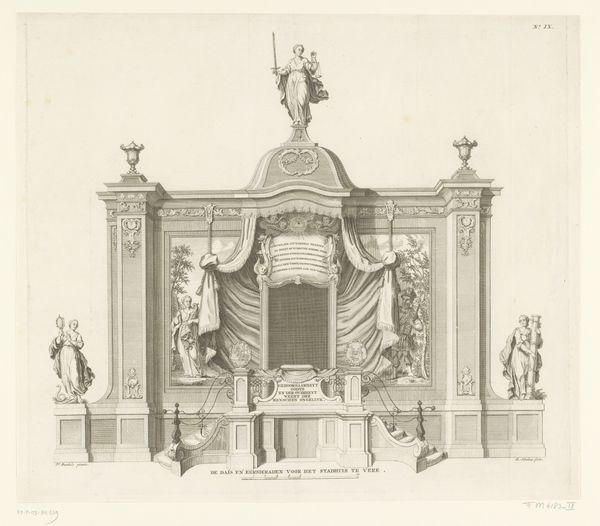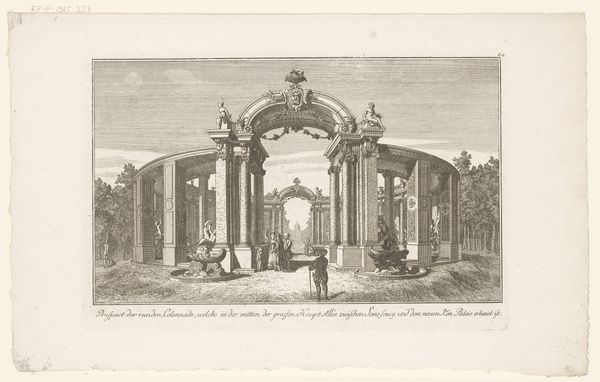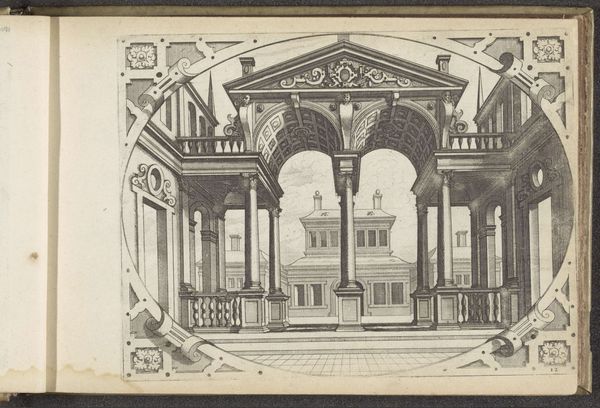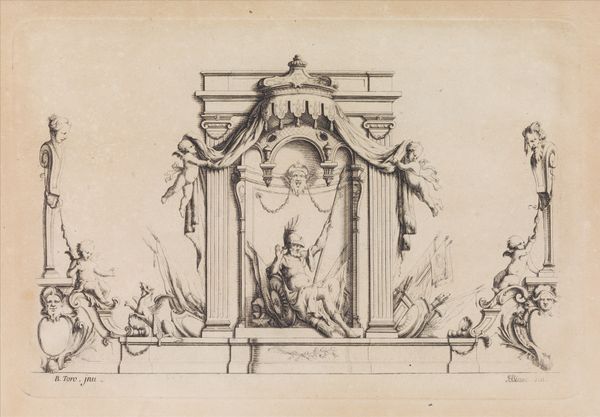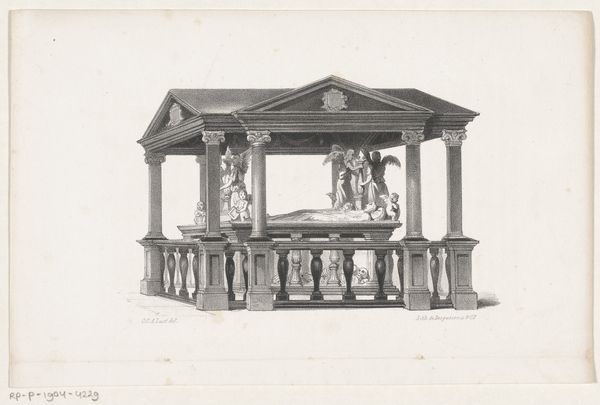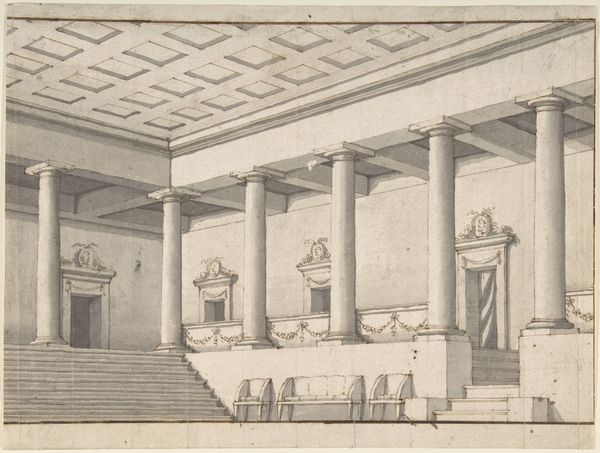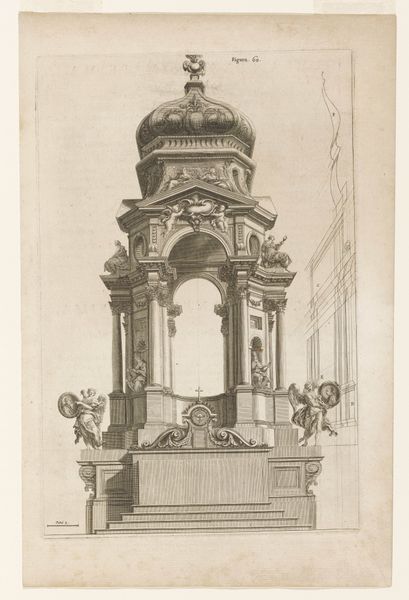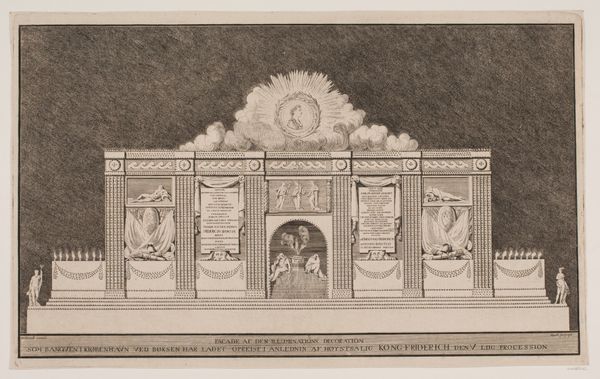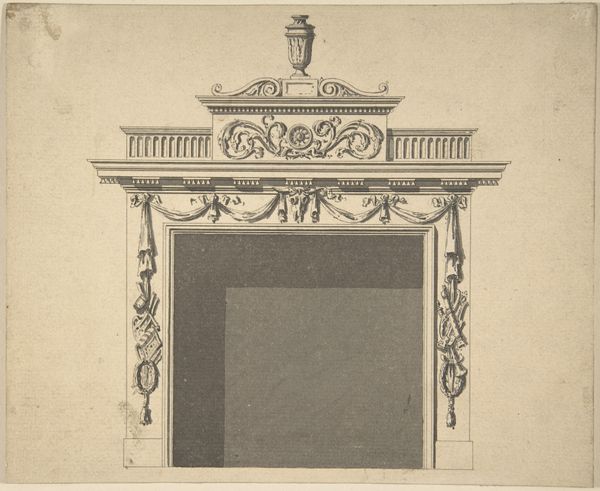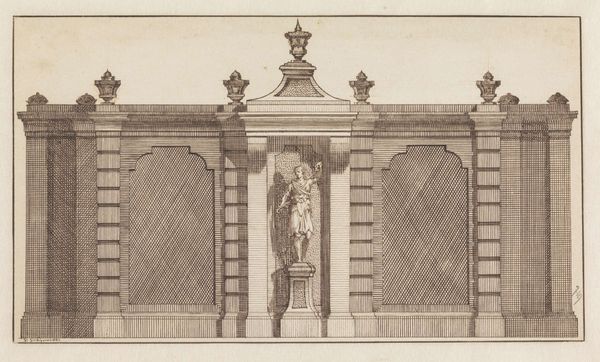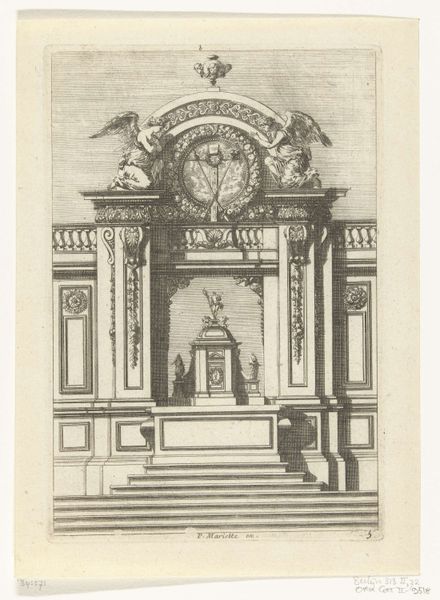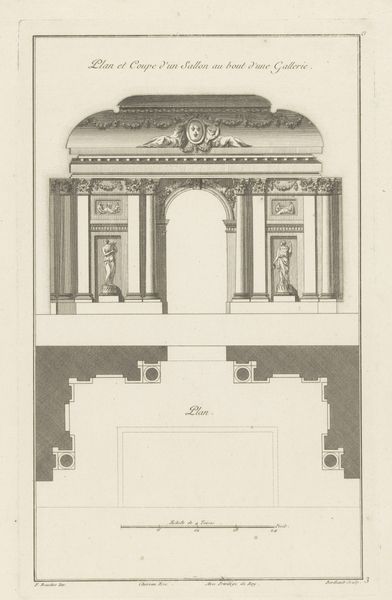
Colonnade and Fountain with a Crowned Armorial Shield 1745 - 1805
0:00
0:00
drawing, print, paper, architecture
#
drawing
#
neoclacissism
# print
#
paper
#
line
#
cityscape
#
architecture
Dimensions: 5 15/16 x 8 7/16 in. (15.1 x 21.4 cm)
Copyright: Public Domain
Editor: This is an anonymous drawing from between 1745 and 1805, titled "Colonnade and Fountain with a Crowned Armorial Shield." It's done with ink on paper and depicts a formal, classical cityscape. What do you see in this piece? Curator: I see an assertion of power and privilege, meticulously constructed within the visual language of Neoclassicism. Consider the very deliberate symmetry, the imposing colonnades, the heraldic shield prominently displayed at the top. It's a carefully orchestrated image designed to project authority. Who benefits from this idealized portrayal of urban space? Who is excluded? Editor: That’s a good point; it definitely feels…cold. What about the fountain? Does that soften the overall impression? Curator: Not necessarily. Fountains, in this era, weren’t merely decorative. They were often symbols of civic improvement, linked to displays of wealth and control over resources. Think about access – who had access to clean water, to these meticulously designed public spaces? Often, it mirrored existing social hierarchies. Editor: So you’re saying that even seemingly benign elements like the fountain can be interpreted as reinforcing social stratification? Curator: Precisely. And look at the architectural style itself. Neoclassicism, with its references to ancient Greece and Rome, was often employed by ruling elites to legitimize their power by associating themselves with idealized past empires. Editor: It’s amazing how much context can be embedded in a seemingly simple drawing. I’ll definitely look at Neoclassical art with a different perspective now. Curator: Understanding the socio-political context is key. Art doesn’t exist in a vacuum; it reflects, reinforces, and sometimes challenges the power dynamics of its time.
Comments
No comments
Be the first to comment and join the conversation on the ultimate creative platform.
